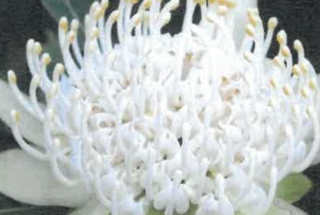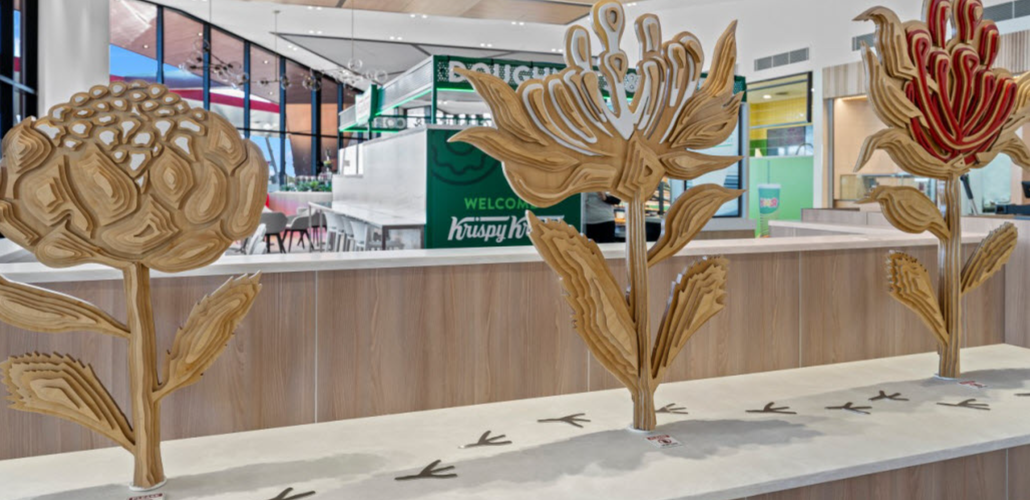Welcome to Ampol Foodary Pheasants Nest Southbound.
A service centre designed to create an exceptional experience for motorists and home to the beautiful dining hall installation, The Waratah by Danielle Mate.

Balarinji
Balarinji, Australia’s foremost indigenous design and strategy studio, has supported us to develop Aboriginal work and Narrative for our Pheasants Nest Highway Service Centre, creating a space that connects with the D’harawal knowledge and stories, allowing travellers to rest and revive while appreciating the local culture.

The White Waratah
The waratah is a shrub endemic to the New South Wales region. Waratah flowers are more commonly red; however the white waratah is rare and unique to the project area.
The white waratah features in D’harawal Dreaming stories and Glenda Chalker, a local D’harawal Knowledge Holder, Waratah dreaming stories have informed the artwork.
Waratah Story
By Glenda Chalker
In the beginning of the world, all waratahs (Mana Gewaan) were white. Amongst the heath, where the waratahs grew, lived the wonga pigeon (Wungowunga).
One day the female wonga pigeon could not find her mate (wonga pigeons mate for life). She searched everywhere, calling for him, but when there was no answer she flew above the tree canopy, which she would not normally do, to see if she could see him.
When she heard him below, she was about to return to the heath where her mate was, when an eaglehawk (burda) attached her striking her breast.
She fell on to the white waratah staining it with her blood, she flew from waratah (mana gewaan) to waratah staining all the waratahs with her blood, until she fell down dead on a waratah.
This is a story of love. There are still some white waratahs that grow in the wild not too far from where Pheasants Nest is located today.
The Waratah Dining Hall Installation

The installation in Pheasants Nest Southbound was designed by Danielle Mate and explores the life cycle of the waratah by depicting the different stage of blooming, informed by the lifecycle of the flower and stalk.
The Waratah Dreaming Story can be seen depicted by the first two waratahs being their original white colour, with the third and final waratah becoming red through the final journey of the wonga pigeon.
The wonga pigeon footprints embedded into the plinth speak to the innate connection between the wonga pigeon and the waratah that we know today. It is reflective of the journey that the wonga pigeon went on, in an attempt to return to her mate, along the way forming the red waratah.
Danielle Mate, the appointed artist for the Pheasants Nest Highway Service Centre, acknowledges her culture through the Kunja people of the Cunnamulla region in South Western Queensland. Danielle has grown up on, lived on and worked on D’harawal Country. Danielle creates art that is relevant to where she is from, where she has been and where she is at in her current belonging and was recommended by the local stakeholders of the D’harawal community.

Ampol acknowledges the Traditional Custodians and divers cultures of the local lands on which we live, work, and operate. We pay our respects to Elders past and emerging.